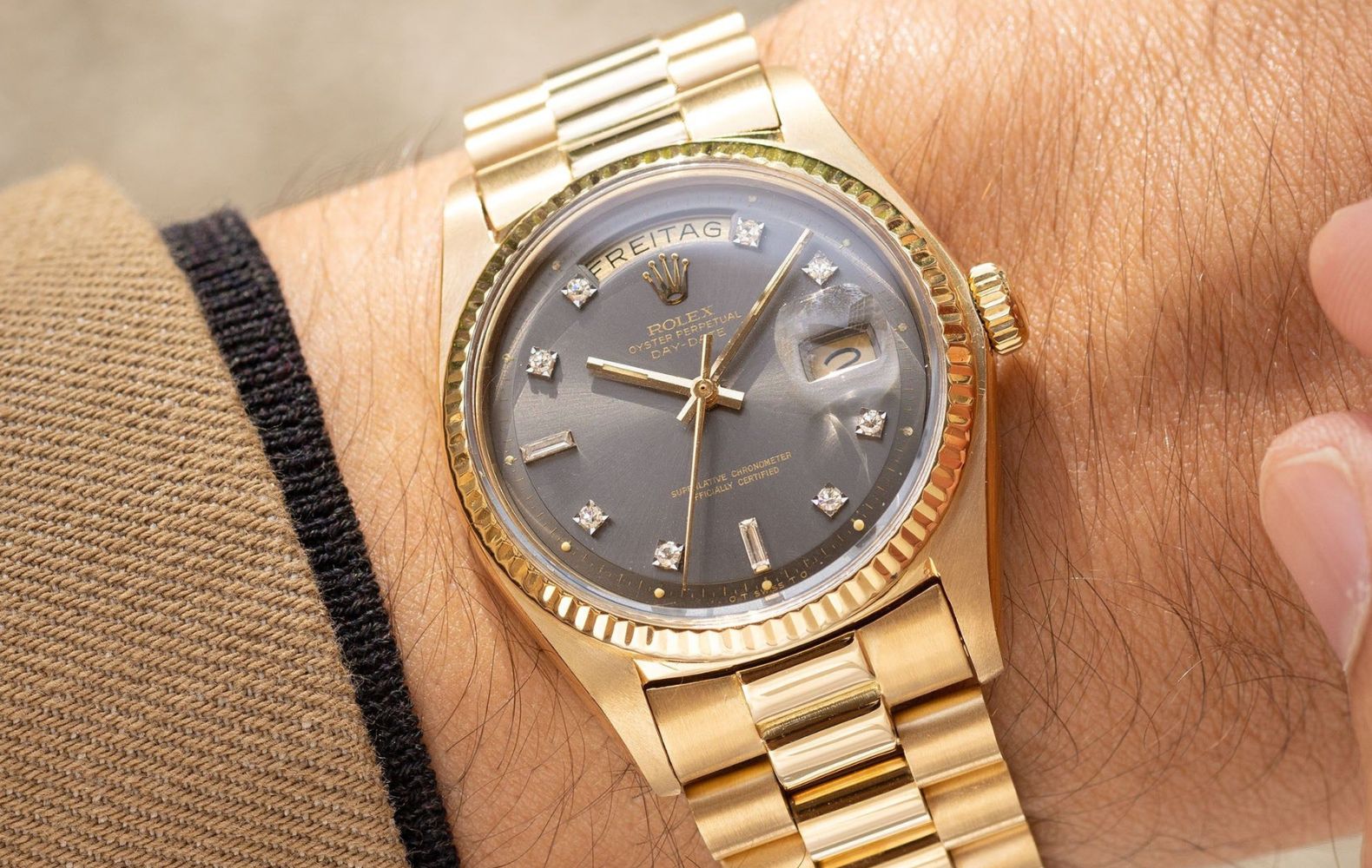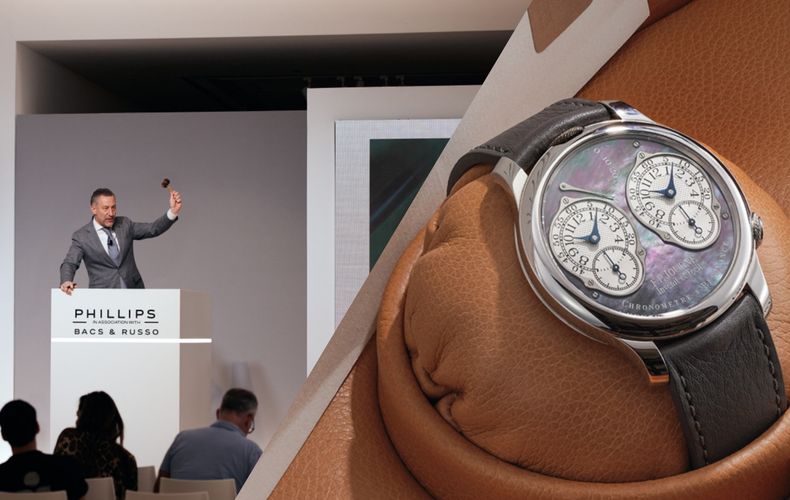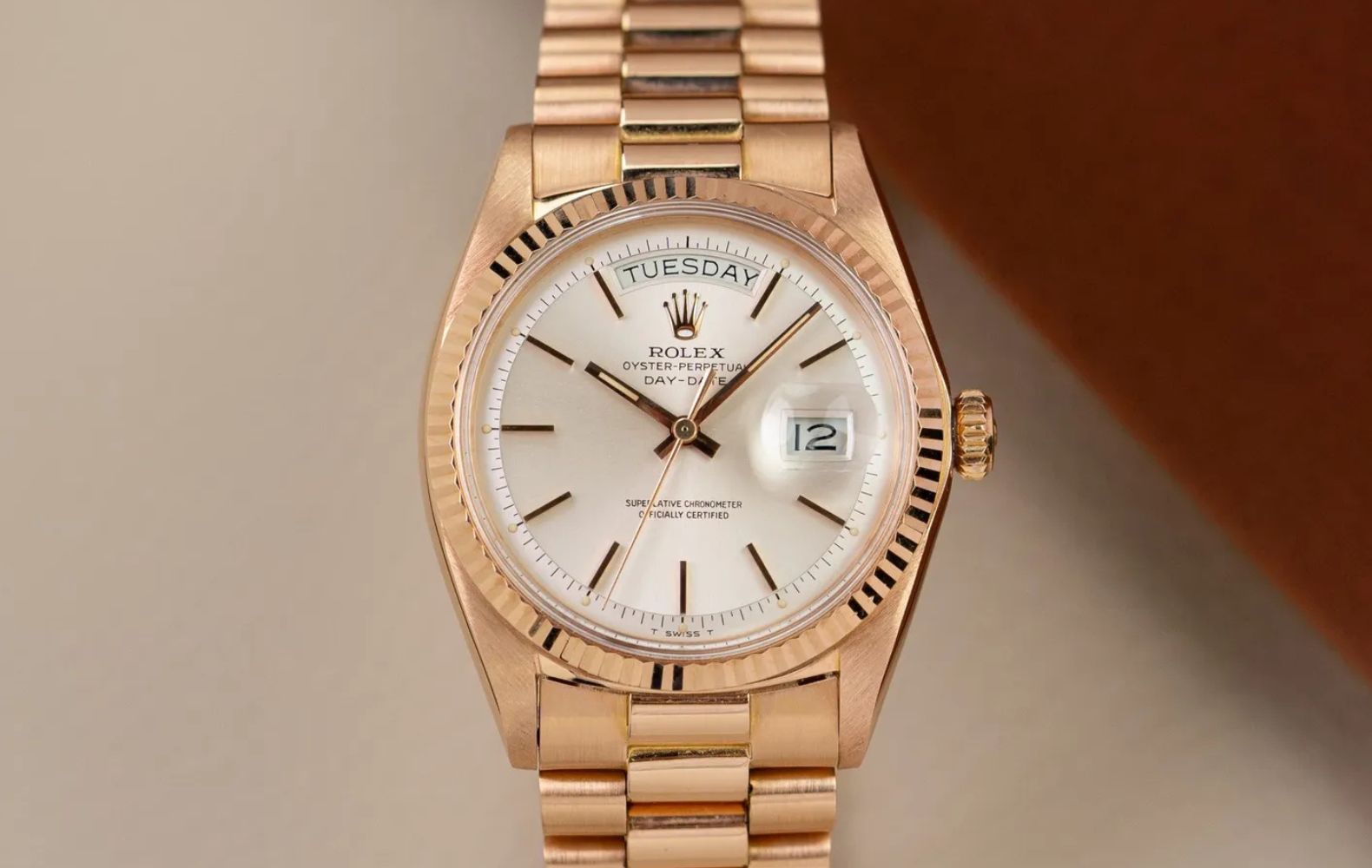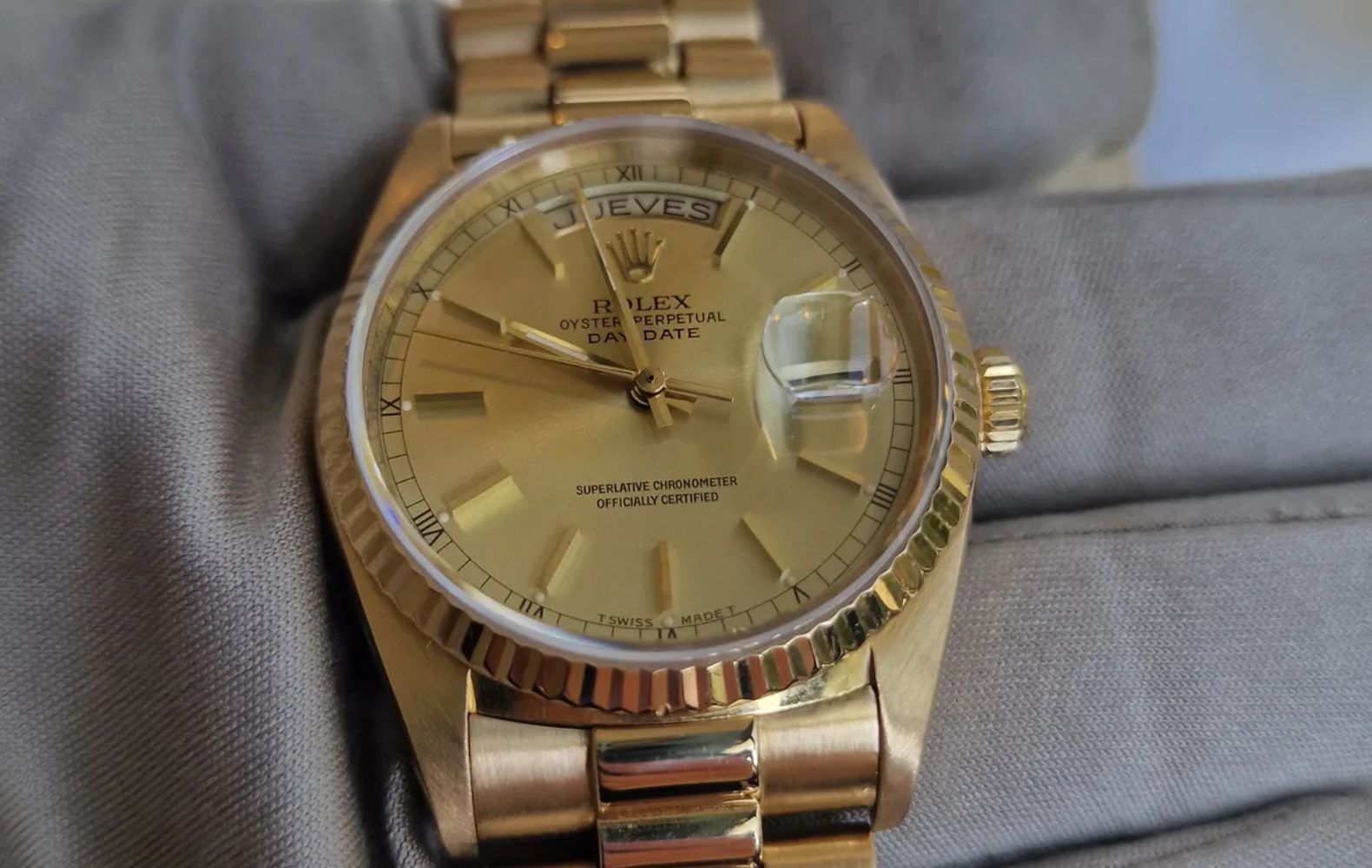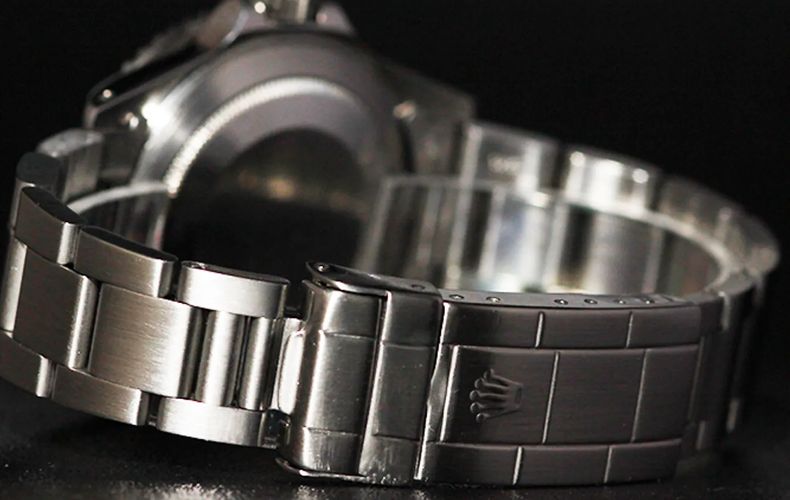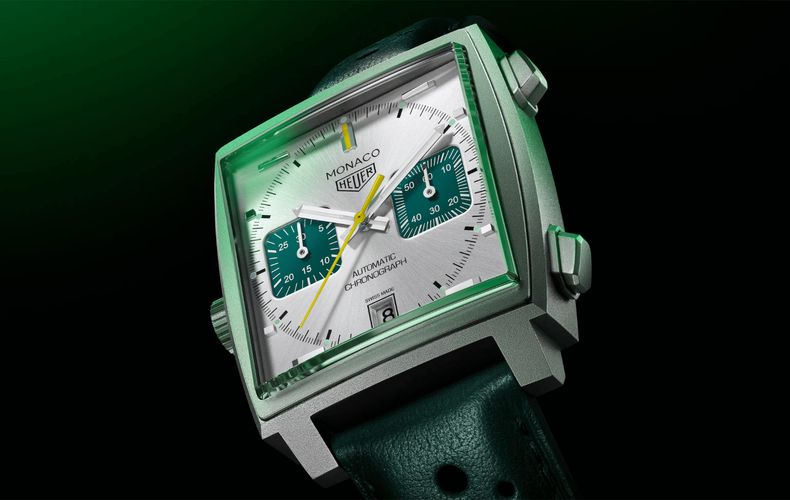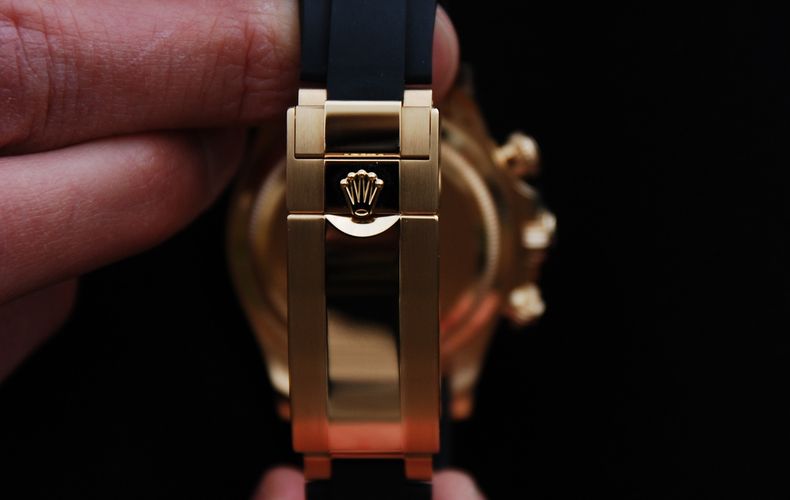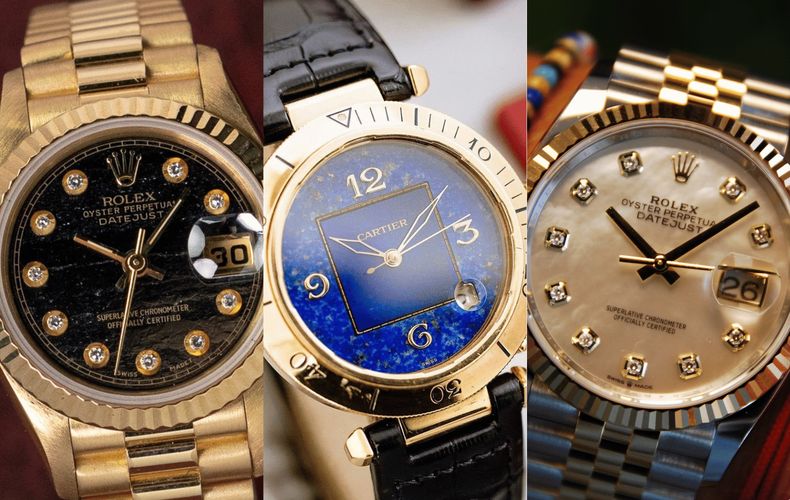Historical Evolution
The Rolex Day-Date has undergone significant changes over the decades. Each reference brings its own unique charm and technological advancements to the table.
The Vintage Charm of Rolex 1803
The 1803 is a true classic, first hitting the scene in the 1960s. It's the granddaddy of the Day-Date family, sporting that iconic President bracelet we all know and love. This bad boy rocks an acrylic crystal and a non-quickset date, giving it that vintage vibe collectors go nuts for.
What's really cool about the 1803 is its pie-pan dial. It's got this subtle raised edge that catches the light just right. And let's talk about that movement - the Caliber 1555 is a workhorse, keeping time like a champ even after all these years.
Pricing wise, these vintage beauties go somewhere around €12.000 to €20.000 depending on condition and rarity. Not too shabby for a piece of horological history!




